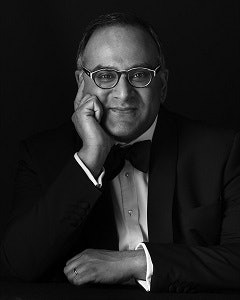Artist and musician Ravi S. Rajan is on a mission to promote innovation in the many ways the California Institute of the Arts (CalArts) incubates a community of artists.
 Ravi S. Rajan
Ravi S. RajanCalArts uses portfolio-based admissions, hosts a number of community arts partnerships and develops students who are using art to put a “cracked world” back together, said CalArts leaders in a visit with Diverse.
Now, the institution’s leaders are taking a moment to reflect on the institution’s 50-year legacy and future, while boldly making the case for equal funding in higher education that includes the arts and humanities.
In a time where there is an ideological power struggle, “the arts make people get closer,” said Rajan, CalArts’ fourth president. “It’s an amazing thing when you give students a makerspace. It’s an amazing thing when you give students instruments. It’s the same part of human potential.”
The Santa Clarita-based, private school offers students access to more than 70 degree programs in visual, performing, media and literary arts. Walt Disney’s vision for CalArts as a “radical space” for artists is still evident today in the ways alum and students’ art speaks truth to power or challenges the status quo, leaders said.
When students arrive at CalArts, they find an openness to the arts, Rajan said, and they are not limited to the confines of a canon of work. “What is a canon?” Rajan asked.
This openness “transforms the way they understand culture” and the world, Rajan said.
CalArts graduates include “Hotel Rwanda” star Don Cheadle – whose portrayal of Rwandan humanitarian Paul Rusesabagina painted a compelling picture of the horrors of the Rwandan genocide – and Adrian Molina, co-director, screenplay writer and lyricist of the Golden Globe-winning film “Coco”, based on the Mexican Día de los Muertos, or Day of the Dead.
CalArts, by accident, is a “practical demonstration” of the equal distribution of talent, added Tim Disney, chairman of the Board of Trustees and co-founder of Uncommon Productions.
“It’s a result of the fact that everyone is the same,” Disney said, noting that the institution’s demographics mirror that of the community.
 Tim Disney
Tim DisneyCurrently, students of color make up nearly 51 percent of the student body. Close to 90 percent of students enrolled at CalArts receive financial aid, given its hefty admissions cost of approximately $50,000.
Rajan and Disney are among a host of voices who note that rising student loan debt is a crushing burden for students.
“It is our power to change that,” Rajan said.
The growing gap between loans and grants issued and the cost of higher education is a “critical problem,” Disney added, making affordability and innovative economic models in education an urgent priority for leaders to address. “We have to pursue every avenue.”
With a student population of about 1,500, leaders have made CalArts an intimate place for students to realize that “the process is more important than the product,” Rajan said. Students’ work is critiqued, they consistently engage in the process of creating and they have opportunities to display their work in productions, exhibitions and discussions throughout the year, with spring being the busiest season.
In addition, the institution has not given grades since its inception, and instead, uses “high pass,” “pass” or “low pass” to denote a students’ artistic growth. This system ensures that students understand that generative failure is part of the artistic process, Rajan said.
Making the case for the arts and humanities, the leaders said funding for fields of science, technology, engineering and mathematics should not come at the expense of the arts or humanities. Rajan and Disney pointed to students at Parkland High School who brought to the national stage the #NeverAgain movement against gun violence.
The students’ experimental lesson in democracy and some of the students’ background in theater and the arts allowed them to shape and drive the conversation, which would not have happened without civics or the arts, Rajan said.
The arts – through movies, music, group dialogue and more – provide spaces for individuals to be cultural change agents, and CalArts is a place for students to recognize that “your voice matters,” Rajan said.
Tiffany Pennamon can be reached at [email protected]. You can follow her on Twitter @tiffanypennamon.



















